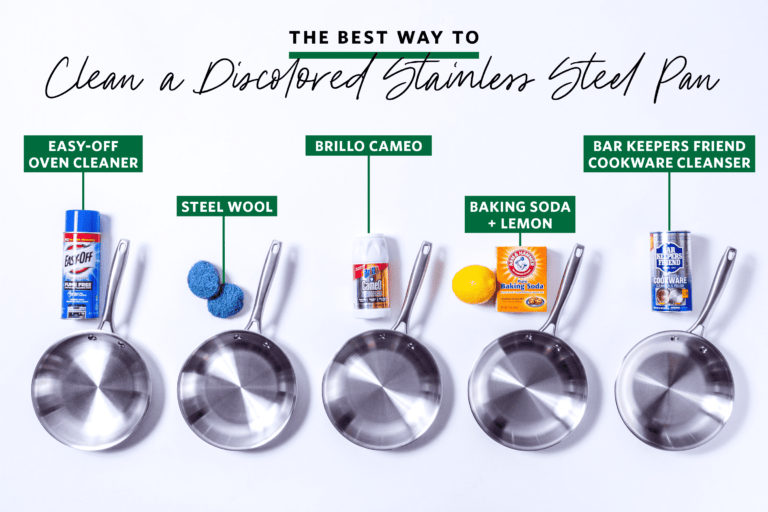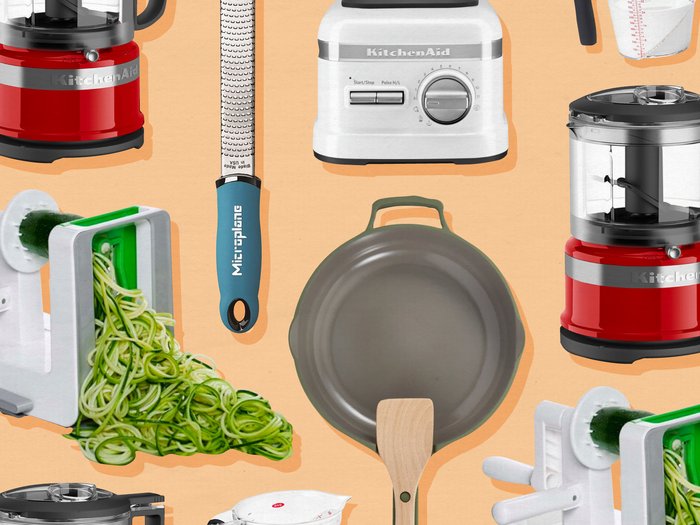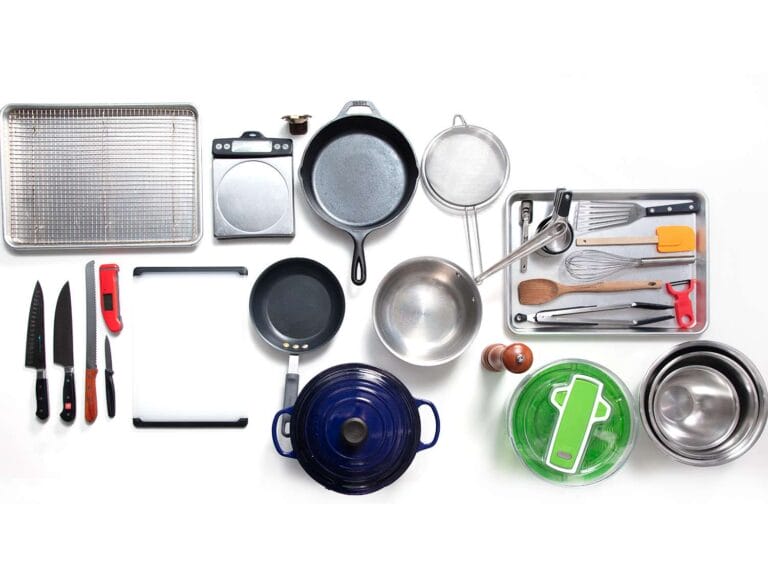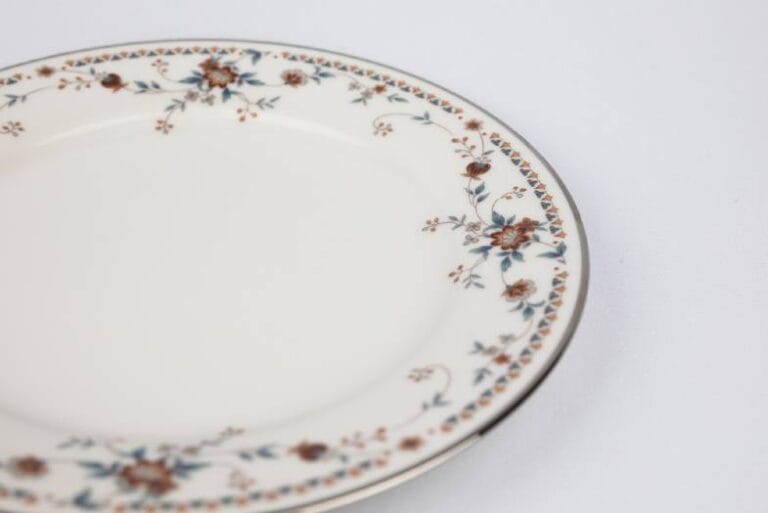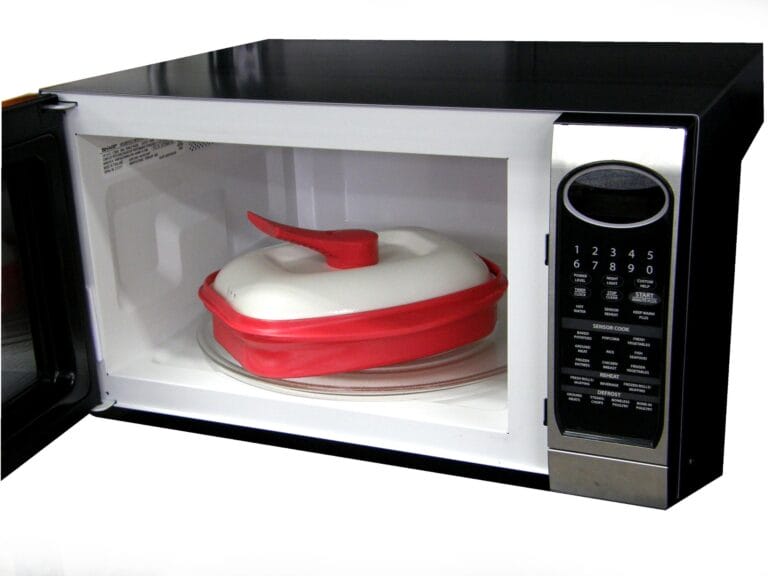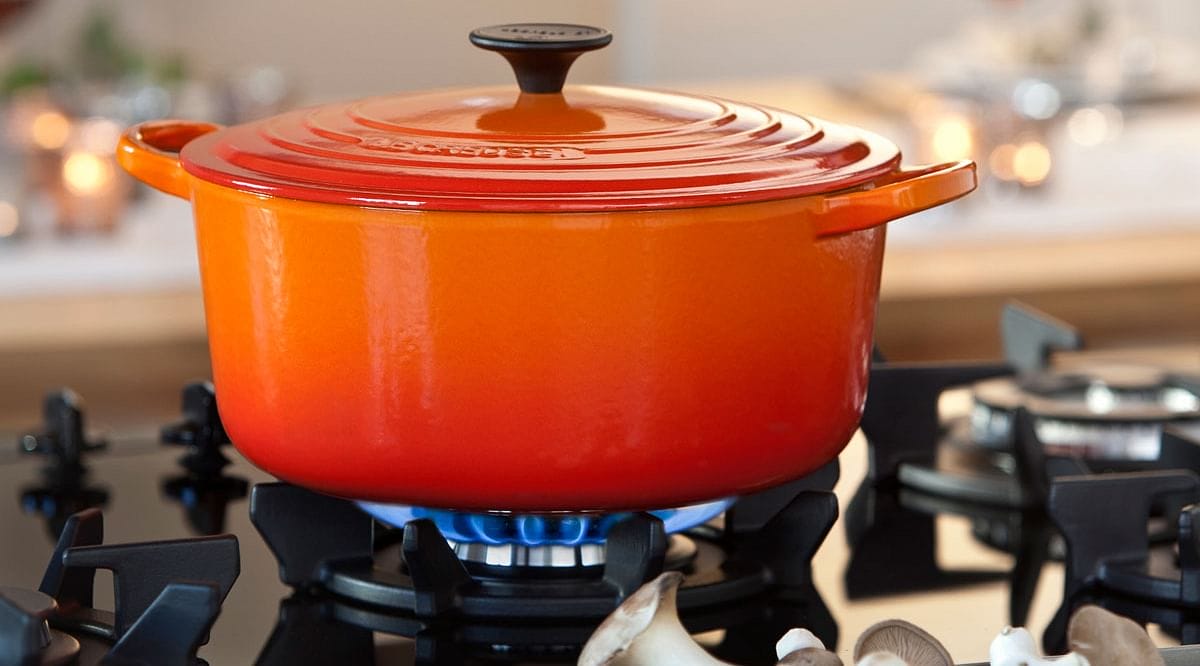
Are you wondering if you can use enamel-coated bakeware on the stovetop? Well, you’ve come to the right place!
In this article, we will explore the pros and cons of using enamel-coated bakeware on your stovetop. So, let’s dive right in and find out if this is a safe and practical option for your cooking needs!
Using enamel-coated bakeware on the stovetop can be quite tempting. After all, it’s versatile and can be used for both baking in the oven and cooking on the stovetop. But is it really safe to put that beautiful enamel-coated dish directly on the burner?
Let’s find out!
When it comes to using enamel-coated bakeware on the stovetop, there are a few things you need to consider. In the next few paragraphs, we will discuss the benefits and drawbacks of this cooking method, so you can make an informed decision. Stick around to learn more about this exciting topic!
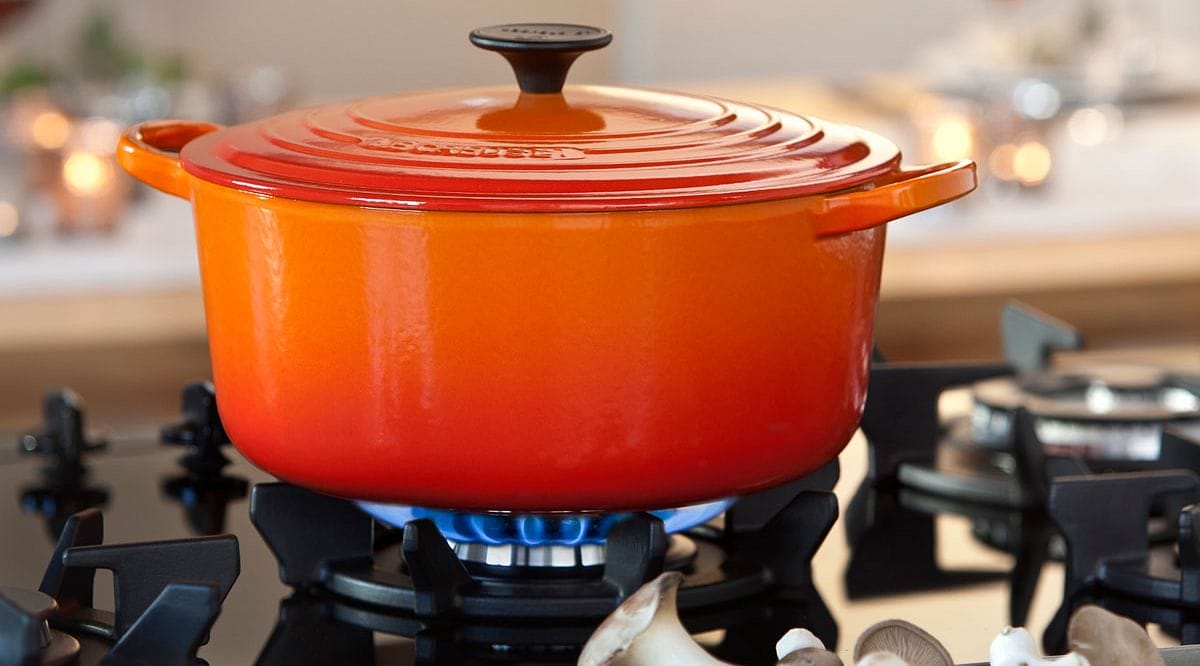
Can You Use Enamel-coated Bakeware on the Stovetop?
Enamel-coated bakeware has gained popularity for its versatility and durability. These beautiful and colorful pieces are typically used in the oven, but can they be used on the stovetop as well?
In this article, we will explore whether it is safe and suitable to use enamel-coated bakeware on the stovetop, providing you with all the information you need to make an informed decision.
Basics of Enamel-coated Bakeware
Enamel-coated bakeware is made by applying a layer of powdered glass to metal, usually cast iron or steel, and then heating it until the glass melts and fuses with the metal.
This process creates a durable and non-stick surface that is resistant to scratches and stains. Enamel-coated bakeware is known for its vibrant colors and smooth finish, making it a popular choice for baking and serving.
Most enamel-coated bakeware is designed to be used in the oven, as the glass coating can withstand high temperatures. However, when it comes to using this type of bakeware on the stovetop, it’s important to consider a few factors, such as the type of stove you have and the specific instructions provided by the manufacturer.
Many enamel-coated bakeware manufacturers explicitly state that their products should not be used on the stovetop. This is because the direct heat from the burner can cause the enamel coating to crack or chip, compromising its integrity.
Using enamel-coated bakeware on the stovetop can also increase the risk of food burning or sticking, as the even distribution of heat that an oven provides may not be present on a stovetop.
Choosing the Right Cookware for Your Stovetop
If you are specifically looking for cookware that can be used on the stovetop, it is best to choose materials that are designed for this purpose.
Cast iron, stainless steel, and copper are all excellent options for stovetop cooking. These materials can withstand high heat and provide even heat distribution, ensuring that your food is cooked evenly and thoroughly.
However, if you still want to use your enamel-coated bakeware on the stovetop, there are certain precautions you can take. First, ensure that your enamel-coated bakeware is in good condition, with no cracks or chips in the enamel coating.
Damaged enamel-coated bakeware should never be used on the stovetop, as it can release harmful chemicals into your food.
Additionally, it’s important to use low to medium heat when cooking with enamel-coated bakeware on the stovetop. Exposing it to high heat can cause the enamel coating to deteriorate and potentially release toxic fumes. Always follow the manufacturer’s instructions and recommendations for the specific piece of cookware you are using.
Benefits of Enamel-coated Bakeware on the Stovetop
While enamel-coated bakeware may not be designed for stovetop use, there are some benefits to using it in this way. First, enamel-coated bakeware is typically lightweight compared to other stovetop cookware options, making it easier to handle and clean.
Enamel-coated bakeware also provides a non-stick cooking surface, which can be beneficial when cooking delicate foods that are prone to sticking.
The smooth enamel coating prevents ingredients from clinging to the pan, resulting in easier food release and cleanup.
Furthermore, enamel-coated bakeware adds a touch of style and elegance to your stovetop cooking. The vibrant colors and glossy finish can elevate your kitchen aesthetics and make your cooking experience more enjoyable.
Tips for Using Enamel-coated Bakeware on the Stovetop
If you decide to use enamel-coated bakeware on the stovetop, here are some tips to ensure safe and effective cooking:
- Preheat the enamel-coated bakeware on low to medium heat to avoid thermal shock.
- Avoid using metal utensils that can scratch or chip the enamel coating.
- Use heat-resistant silicone or wooden utensils instead.
- Monitor the cooking process closely to prevent burning, as the heat distribution on a stovetop may be less even compared to an oven.
- Allow the enamel-coated bakeware to cool completely before cleaning to avoid thermal shock and potential damage to the enamel coating.
- Use non-abrasive cleaning agents and avoid harsh scrubbing, as this can damage the enamel coating.
While enamel-coated bakeware is primarily designed for use in the oven, it is possible to use it on the stovetop with caution. However, it is important to note that not all enamel-coated bakeware is suitable for stovetop use, and it is always best to refer to the manufacturer’s instructions.
If you choose to use enamel-coated bakeware on the stovetop, be sure to follow the recommended guidelines for safe and effective cooking. With proper care and attention, you can enjoy the benefits of enamel-coated bakeware both in the oven and on the stovetop.
Frequently Asked Questions
Are you wondering if enamel-coated bakeware can be used on the stovetop? We’ve got the answers to your questions right here!
1. Can enamel-coated bakeware be used directly on the stovetop?
No, it is not recommended to use enamel-coated bakeware directly on the stovetop. Enamel-coated bakeware is designed for oven use and is not suitable for stovetop cooking.
The high heat from the stovetop can cause the enamel coating to crack or melt, damaging the bakeware and potentially releasing harmful chemicals into your food. It’s best to use enamel-coated bakeware for baking or roasting in the oven instead.
However, if you still want to use your enamel-coated bakeware on the stovetop, you can place it on a heat diffuser or a cast iron skillet to distribute the heat more evenly. This can help protect the enamel coating and prevent direct exposure to high heat.
2. Can I use enamel-coated bakeware on an electric stovetop?
Using enamel-coated bakeware on an electric stovetop is not recommended. Electric stovetops can generate high and concentrated heat, which can cause the enamel coating of the bakeware to crack or melt. It’s safer to stick with using enamel-coated bakeware in the oven, where the heat is more evenly distributed.
If you really need to use your enamel-coated bakeware on an electric stovetop, you can follow the same tip as mentioned earlier: place it on a heat diffuser or a cast iron skillet to protect the enamel coating from direct exposure to the heat source.
However, it’s always best to check the manufacturer’s instructions or contact the manufacturer directly for their recommendations on using the Bakeware on different types of stovetops.
3. Can enamel-coated bakeware be used on a gas stovetop?
No, it is not recommended to use enamel-coated bakeware directly on a gas stovetop. Similar to electric stovetops, gas stovetops generate high and concentrated heat that can cause the enamel coating to crack or melt. It’s safer to use enamel-coated bakeware in the oven where the heat is more evenly distributed.
If you still want to use your enamel-coated bakeware on a gas stovetop, you can place it on a heat diffuser or a cast iron skillet to protect the enamel coating.
However, always check the manufacturer’s instructions or contact the manufacturer for their recommendations to ensure the safety and longevity of your bakeware.
4. Can enamel-coated bakeware be used on an induction stovetop?
It is generally not recommended to use enamel-coated bakeware directly on an induction stovetop. Induction stovetops generate heat through magnetic fields, and the high heat produced by induction cooking can cause the enamel coating to crack or melt. It is best to use enamel-coated bakeware in the oven, where the heat is more evenly distributed.
If you really need to use enamel-coated bakeware on an induction stovetop, you can try placing it on a heat diffuser or a cast iron skillet to protect the enamel coating. However, always check the manufacturer’s instructions or contact the manufacturer for their recommendations to ensure the safety of your bakeware.
5. Can enamel-coated bakeware be used on a ceramic stovetop?
No, it is not recommended to use enamel-coated bakeware directly on a ceramic stovetop. The high heat generated by a ceramic stovetop can cause the enamel coating to crack or melt.
It’s best to stick with using enamel-coated bakeware in the oven, where the heat is more evenly distributed.
If you still want to use your enamel-coated bakeware on a ceramic stovetop, you can place it on a heat diffuser or a cast iron skillet to protect the enamel coating.
Always refer to the manufacturer’s instructions for their recommendations on using the bakeware on different types of stovetops to ensure your safety and the longevity of your bakeware.
So, can you use enamel-coated bakeware on the stovetop? The answer is no. Enamel-coated bakeware is not suitable for stovetop use because it may crack or melt due to high heat. Stick to using it in the oven only.
If you want to cook on the stovetop, use cookware that is specifically designed for stovetop use. Materials like stainless steel, cast iron, and non-stick are better options. Always check the manufacturer’s instructions to ensure you are using your cookware properly and safely.

